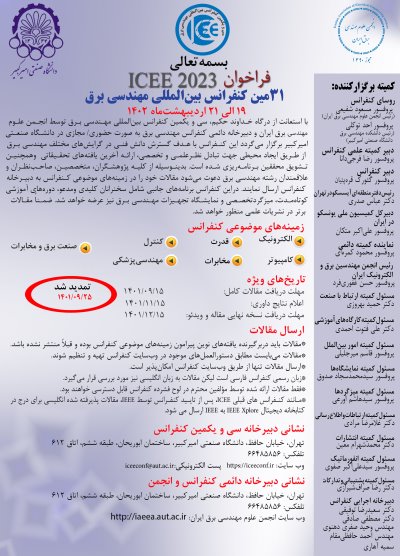0% Complete

نویسندگان :
کلمات کلیدی :
چکیده :
لیست مقالات بایگانی شده
Seyed Ali Samareh-TaheriNasab - Mohammad Sadegh KhajueeZadeh - Zahra Nasiri-Gheeidari - Samad Sheikhaei
یوسف عطائی - رضا قندهاری - مهدی بابائی - بهنام بهارلوئی
Soheil Hasani Sangani - Mohamad Reza Moslemnejad - Mojtaba Saeedi - Alireza Jalalitalab - Reza Beiranvand
Emadodin Sakhaee - Mahdi Kalbasi
Niloufar Sayadi - Mohammad Eshghi
Sarvenaz Bourbour - Fariba Bahrami Boodelalou - Ghorban Taghizadeh
Mohammad Hossein Mousavi - Hassan Moradi CheshmehBeigi
Sirvan Gharib - Abolfazl Falahati - Vahid Ahmadi
یاشار مغمومی - فرشته صادقی
Mohammad Javad Saber1 - Seyedeh Maryam Mazloum - Seyed Mohammad Sajad Sadough





